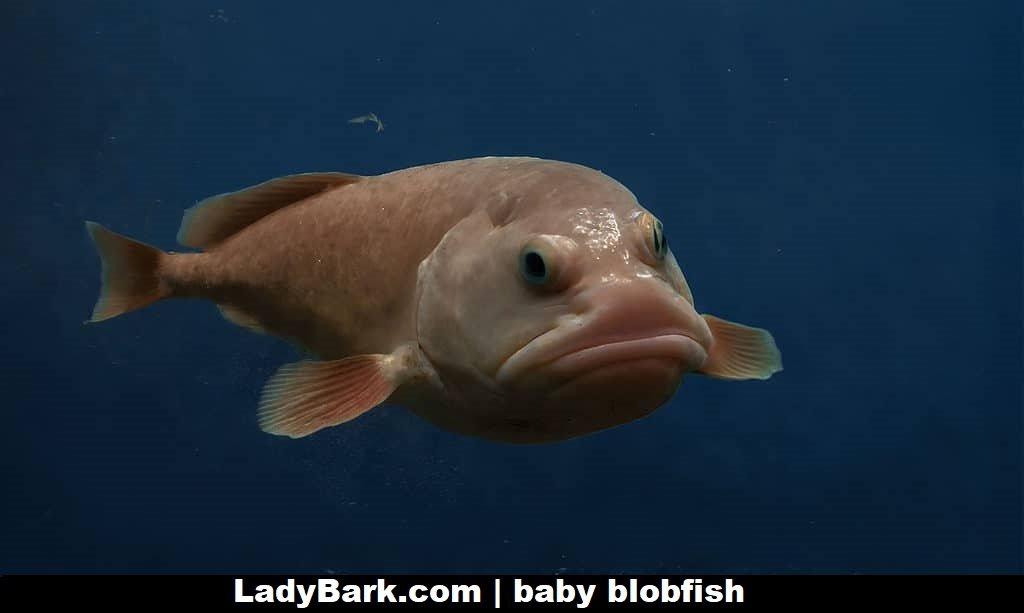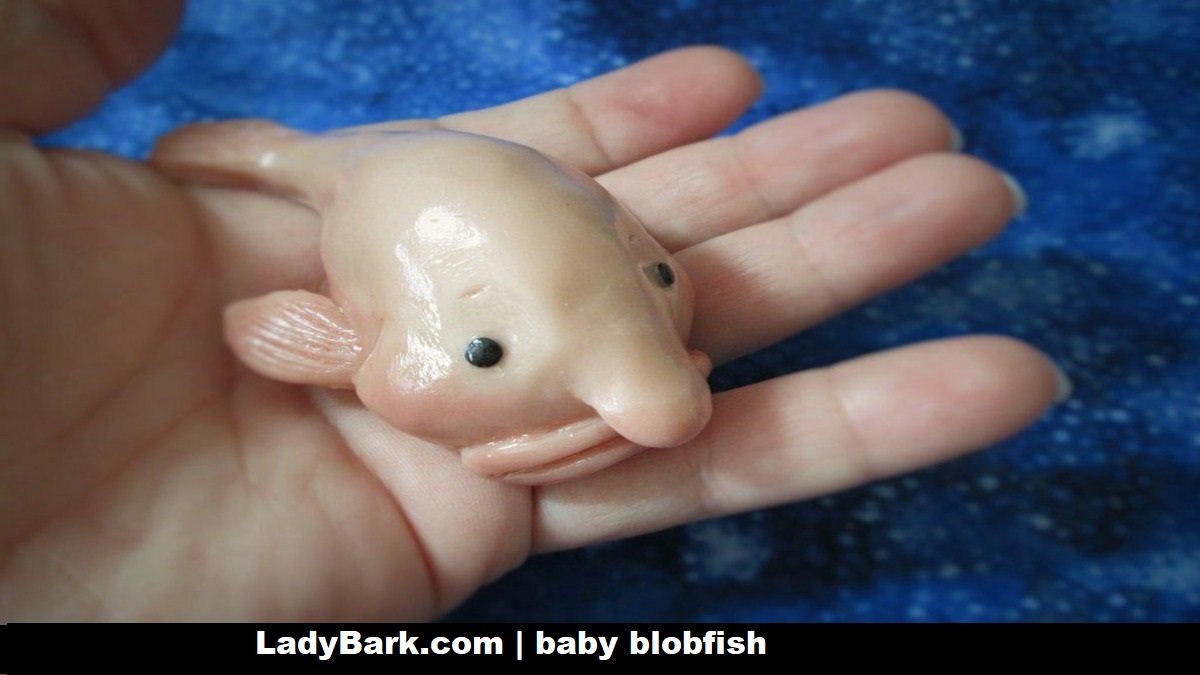The Baby blobfish, a marine creature with a unique and endearing look, has captured the interest and affection of many. Known for its gelatinous body and specific facial capabilities, the toddler blobfish sticks out as one of nature’s cutest oddities. This article delves into the captivating international of the Baby blobfish, exploring its biology, habitat, and the reasons behind its unusual look. We may also talk about the conservation efforts in the location to guard this specific species and the role it plays in the marine surroundings.
Understanding the Blobfish: An Overview
What is a blobfish?
The blobfish (Psychrolutes marcidus) is a deep-sea fish belonging to the family Psychrolutidae. It is normally found in the deep waters off the coasts of Australia, Tasmania, and New Zealand. The blobfish inhabits depths of six hundred to 1,2 hundred meters (2,000 to 3,900 feet), where the strain is significantly better than at the surface.Ladybark
Physical Characteristics
Baby Blobfish are acknowledged for their one-of-a kind, gelatinous look. They lack a swim bladder, an organ that allows many fish to hold buoyancy. Instead, our bodies are normally composed of a gelatinous mass with a density slightly less than that of water, allowing them to float above the sea floor without expending strength. This particular model is critical for his or her survival within the deep-sea environment.
The Baby Blobfish: Even Cuter
While adult blobfish have received notoriety for their unusual appearance, baby blobfish are even more fascinating. Their smaller size and much less evolved functions provide them with a slightly special, frequently more cute appearance. Their eyes appear large relative to their bodies, and their gelatinous form is even more mentioned.
The Biology of the Baby Blobfish
Development and growth
Blobfish begin their lives as tiny eggs laid in clusters on the seafloor. The dad and mom, especially the ladies, frequently live near the eggs to protect them from predators. Once hatched, Baby blobfish (larvae) depend on the nutrient-rich yolk sac attached to their bodies for sustenance until they can hunt for themselves.
Diet and feeding habits
As juveniles, blobfish feed on small invertebrates and natural debris that drifts down from the sea’s top layers. Their weight loss plan broadly speaking includes sea pens, crabs, mollusks, and sea urchins. The lack of muscle in our bodies means they are not active hunters. Instead, they open their mouths and let meals flow in, a method that fits their low-energy lifestyle.
Adaptations to Deep-Sea Life
Baby blobfish, like their adult counterparts, are nicely adapted to life in the deep sea. Their gelatinous bodies help them face up to the extreme pressures in their deep-sea habitat. Additionally, their reduced skeletal structure minimizes electricity expenditure, which is crucial for survival in an environment where meals may be scarce.
The Habitat of the Blobfish
Deep-Sea Environment
The deep-sea environment is one of the most challenging habitats on Earth. High-strain, low-temperature situations require specific variations for survival. Blobfish are commonly discovered at depths in which sunlight no longer penetrates, resulting in near-general darkness.
Geographical Distribution
Blobfish are primarily located in the deep waters off the coasts of Australia, Tasmania, and New Zealand. These regions offer the high-stress environments that blobfish are tailored to stay in. The unique distribution inside those regions can range primarily based on elements including food availability and ocean currents.
Ecological Role
Blobfish play a vital function in their deep-sea surroundings. As part of the Benthic network, they make a contribution to the general health of their environment by collaborating on the meals web. They assist in manipulating the populations of smaller invertebrates and offer food for large predators.
The Peculiar Appearance of the Blobfish
Why do blobfish look so strange?
The uncommon look of the blobfish, especially when viewed out of water, is an end result of their variations in deep-sea pressure. At their native depths, the high stress facilitates preserving their form. When delivered to the surface, the lack of stress causes our bodies to amplify and appear flattened and gelatinous.
Baby Blobfish: A Closer Look
Baby blobfish, while nonetheless showing the characteristic gelatinous texture, often appear less distorted than adults when delivered to the floor. Their smaller size and less advanced features make a contribution to their cuteness. Their big, spherical eyes and comparatively smaller mouths give them a more endearing look in comparison to the extra-famous grownup blobfish.
The Science Behind Their Gelatinous Bodies
The blobfish’s body consists mostly of a gelatinous substance with a density slightly less than water. This version is important for survival inside the deep sea, where preserving buoyancy without a swim bladder is essential. The gelatinous mass provides the important buoyancy to keep the fish afloat simply above the sea floor, keeping energy.
Conservation of the Blobfish
Threats to Blobfish Populations
Despite their far-off habitat, blobfish face substantial threats from human activities. The primary danger is deep-sea trawling, a fishing approach that drags heavy nets throughout the ocean floor, indiscriminately taking pictures of marine lifestyles such as blobfish. This negative exercise can decimate blobfish populations and disrupt their habitat.
Conservation Efforts
Conservation efforts for blobfish are difficult because of their deep-sea habitat and constrained visibility. However, steps are being taken to guard them. These include advocating for sustainable fishing practices and creating marine protected regions to guard their habitat. Researchers are also working to better understand blobfish biology and ecology to develop conservation techniques.
The Importance of Public Awareness
Raising public awareness about the blobfish and the threats it faces is critical for its conservation. The blobfish’s particular look has already garnered substantial media attention, which may be leveraged to support conservation efforts. Educational programs and tasks can help the public understand the importance of preserving deep-sea ecosystems.
The Role of Blobfish in Popular Culture
Media and Public Perception
The blobfish’s one-of-a-kind appearance has made it a topic of fascination and humor in the famous way of life. It has been dubbed the “global’s ugliest animal,” a title that, even as unflattering, has brought attention to the species. This notoriety may be a double-edged sword, generating hobbies but also perpetuating misconceptions.
The Blobfish as a Symbol of Deep-Sea Life
Despite the humor regularly associated with its look, the blobfish serves as a symbol of the mysterious and unexplored deep-sea surroundings. It highlights the tremendous diversifications required for survival in excessive situations and underscores the importance of preserving these unique ecosystems.
Merchandise and Mascots
The blobfish’s particular look has inspired various merchandise, consisting of plush toys, T-shirts, and different novelty gadgets. These products capitalize on the blobfish’s notoriety and might help improve attention and budget for conservation efforts. Additionally, the blobfish has been followed as a mascot for various companies and activities, similarly cementing its vicinity in the famous way of life.

The Future of Blobfish Research
Advancements in Deep-Sea Exploration
Technological advancements are making it possible to explore deep-sea environments much better than ever before. Remotely operated vehicles (ROVs) and superior submersibles are offering researchers extraordinary access to the blobfish’s habitat. These gears are vital for analyzing blobfish and their herbal surroundings and gaining insights into their behavior and ecology.
Understanding blobfish behavior
One of the key regions of blobfish studies is knowing their behavior in the wild. Observing how they interact with their surroundings, what they devour, and the way they reproduce can offer precious statistics for conservation efforts. Research projects are focusing on long-term research on song blobfish populations and display modifications over the years.
Genetic Studies
Genetic research is also playing a great role in blobfish studies. By studying the genetic makeup of blobfish, scientists can examine more closely their evolutionary history and the way they have adapted to deep-sea life. This record can also help identify one-of-a-kind populations and verify their genetic diversity, which is crucial for conservation planning.
Conclusion: Embracing Nature’s Oddities
The baby blobfish, with its gelatinous body and endearing features, represents one of nature’s most unique and charming creatures. Despite its uncommon look, the blobfish plays a crucial role within the deep-sea atmosphere and offers treasured insights into the adaptations required for survival in excessive environments. As we preserve and discover the depths of the sea, the blobfish serves as a reminder of the exquisite diversity of lifestyles on our planet.
The importance of conservation
Protecting the blobfish and its habitat is vital for maintaining the health of deep-sea ecosystems. Sustainable fishing practices, marine-covered areas, and elevated public cognizance are all critical components of conservation efforts. By valuing and defending species like the blobfish, we are able to make certain that future generations have the possibility to wonder at nature’s oddities and learn from their precise variations.
Embracing Curiosity and Wonder
The story of the Baby blobfish encourages us to embody curiosity and wonder about the herbal world. It challenges our perceptions of beauty and highlights the significance of biodiversity. By appreciating and protecting even the most unusual creatures, we will foster a deeper connection with the natural world and inspire an experience of stewardship for our planet.
In conclusion, the toddler blobfish is more than simply a peculiar face; it’s far more a testament to the excellent adaptability and variety of lifestyles on Earth. As we hold on to uncover the mysteries of the deep sea, let us rejoice and protect those charming creatures, making sure that they thrive in their herbal habitats for generations to come.

